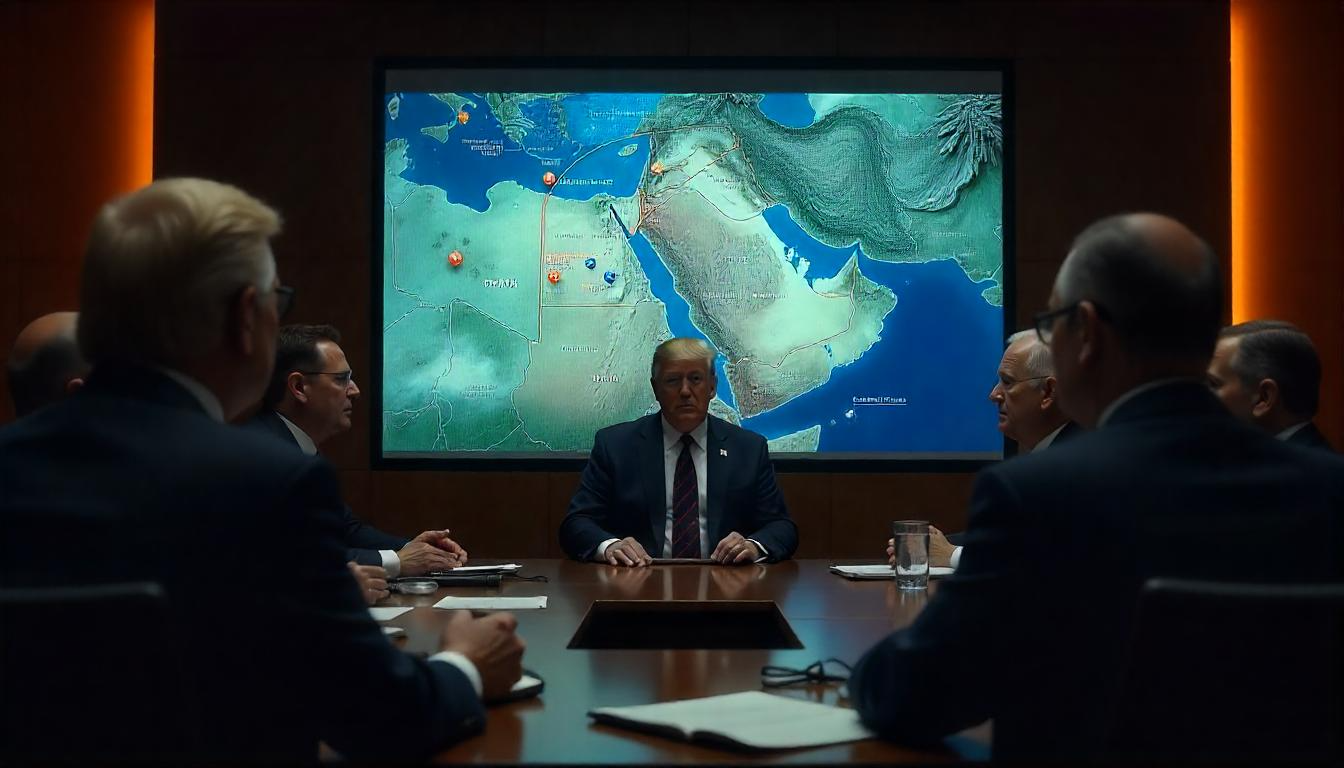With growing tension in the Middle East, particularly between Iran and Israel, one burning question has captured the world’s attention: Could Donald Trump authorize a tactical nuclear strike on Iran? While headlines swirl and rumors spread, let’s take a grounded look at the facts, the possibilities, and the implications behind this alarming topic.

A Volatile Situation
In the past weeks, military conflict between Israel and Iran has rapidly intensified. Israel targeted several Iranian facilities—some believed to be linked to its nuclear program. Iran responded with a barrage of drones and missiles. Amidst this, reports emerged that former U.S. President Donald Trump, who remains highly active in shaping U.S. foreign policy, is re-evaluating America’s role in this unfolding crisis. He’s reportedly considering whether the U.S. should join Israel militarily, with a decision expected in the next few weeks.
Are Nuclear Weapons on the Table?
The quick answer is: not officially. Despite speculation, there is no verified evidence that Trump is preparing to launch tactical nuclear weapons. Military insiders have indicated that while some “bunker-buster” bombs—powerful conventional weapons—are under consideration to strike fortified nuclear sites like Iran’s Fordow facility, nuclear options were not presented in recent briefings to Trump.
That said, due to the depth and protection of some Iranian facilities, strategic advisors have discussed the limits of conventional strikes, which inevitably brings nuclear scenarios into theoretical conversation.
Why the Concern About Fordow?
The Fordow uranium enrichment site is located deep within a mountain—reportedly hundreds of feet underground. Analysts believe that only the most advanced bunker-penetrating weapons could have any effect. Some have even speculated that a low-yield nuclear bomb might be the only way to fully destroy such a facility.
But using nuclear weapons would drastically escalate the situation, inviting massive international backlash and possibly triggering a broader conflict in the region. So far, Trump has not signaled willingness to cross that line.
Trump’s Public Stance
Trump recently emphasized that he wants Iran to completely abandon its nuclear weapons program—without compromise. He gave a strong statement onboard Air Force One, saying Iran “must walk away from any ambition of building a bomb.” He also mentioned that a decision on U.S. involvement in the Iran-Israel conflict would be made within two weeks. According to sources, he’s been briefed on military options—but these currently include only non-nuclear airstrikes, such as using precision bunker-buster bombs.
How the U.S. Government Checks Extreme Decisions
Even if Trump wanted to explore nuclear options, it’s not a decision he can make in isolation. Here’s what would limit or complicate such a move:
-
Military Oversight: Top generals and intelligence officials would need to approve and carry out such a strike, and so far, they’ve advised against it.
-
Legal Hurdles: Nuclear weapons use typically falls outside routine presidential authority. Any such decision would require Congressional involvement and international justification.
-
Intelligence Assessments: Recent U.S. intelligence suggests that while Iran is enriching uranium, there’s no concrete evidence it is currently building nuclear weapons—making it harder to justify such an extreme response.
What Are Tactical Nuclear Weapons Anyway?
Unlike large-scale nuclear bombs designed to destroy entire cities, tactical nuclear weapons are meant for limited battlefield use. They have smaller blast yields but are still incredibly destructive—especially against fortified or underground structures. In theory, a tactical nuke could destroy Fordow. But using one would cross a historic red line, with severe political, ethical, and humanitarian consequences. That’s why even high-risk military operations rarely include nuclear options, unless absolutely unavoidable.
What Analysts Are Saying
Policy experts and defense commentators are largely urging restraint:
-
Some argue that military action—especially nuclear—is too risky and that diplomatic channels must remain open.
-
Others say the U.S. should support Israel without becoming directly involved, especially when international negotiations are underway to reduce tensions.
-
A few strategic voices argue for preemptive strikes if Iran’s nuclear work becomes undeniable—but even they stop short of recommending nuclear force.
The Role of International Diplomacy
Europe, the United Nations, and other key players are actively involved in negotiations with Iran and regional allies. Their hope is to de-escalate before things spiral further. If diplomacy can achieve results—such as a pause in enrichment or an inspection agreement—then even conventional military options may be taken off the table. But if Iran escalates or refuses to engage, Trump’s team may revisit more aggressive strategies.
So, What Can We Expect?
Right now, a tactical nuclear strike is highly unlikely.
Here’s what’s more realistic:
-
The U.S. might authorize conventional airstrikes using precision weapons.
-
Trump may increase pressure through economic sanctions or cyber operations.
-
The administration could wait and monitor the results of ongoing diplomatic talks before taking action.
Watch These Key Developments
If you’re following this story, keep an eye on:
-
Trump’s next press briefing or official statement on Iran
-
Congressional debates on military authorization
-
Iran’s diplomatic posture in the coming days
-
Any new intelligence releases regarding Iran’s nuclear program
Final Thoughts
The idea of nuclear warfare is chilling—but as of now, it remains a remote possibility, not an immediate threat. Trump has not been formally presented with nuclear strike options, and experts suggest that the U.S. will continue to pursue conventional military or diplomatic measures to address Iran’s nuclear infrastructure. Though tensions are high, the world is watching carefully—and decision-makers know that once you cross the nuclear threshold, there’s no turning back.